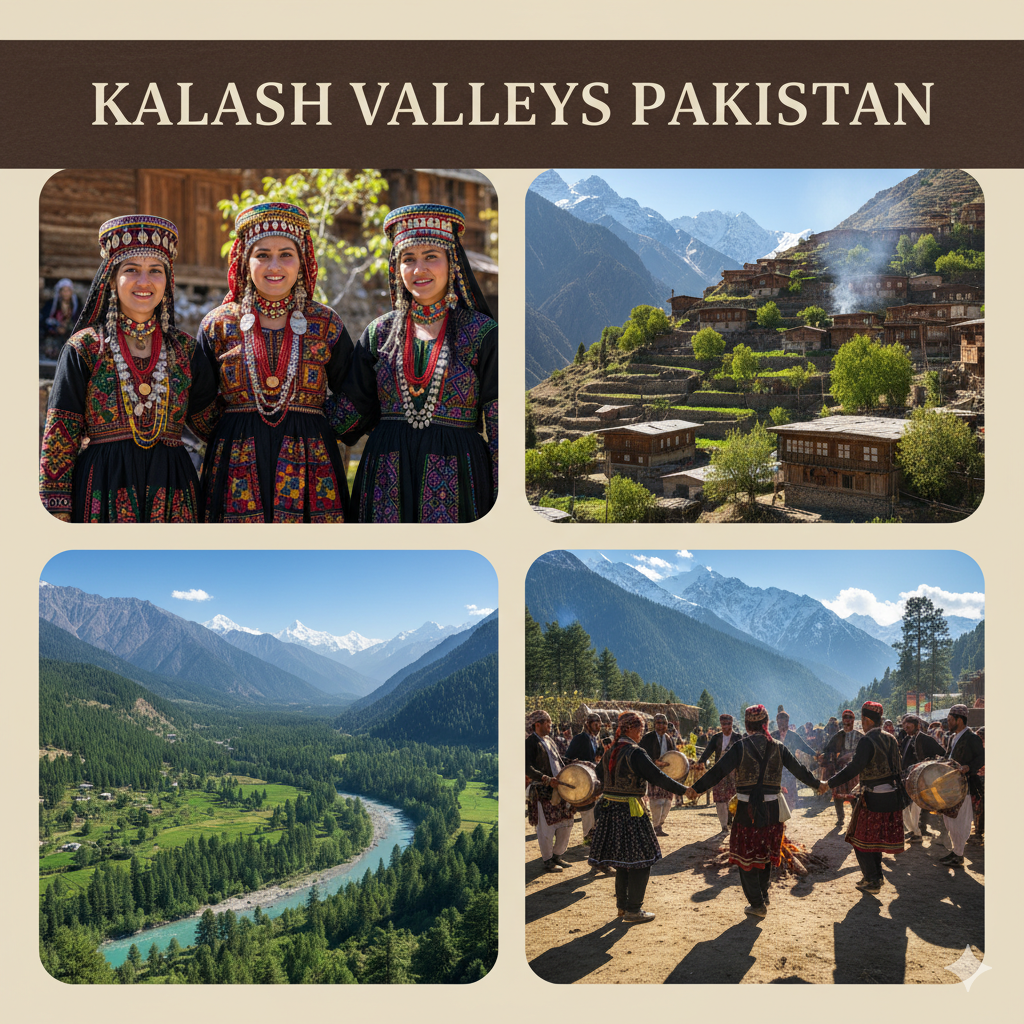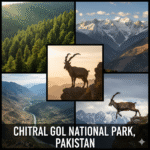The Hidden Jewel of Northern Pakistan
Deep in the rugged folds of Pakistan’s Hindu Kush mountains lie three magical valleys — Bumburet, Rumbur, and Birir — collectively known as the Kalash Valleys.
They’re home to the Kalash people, a small indigenous community known for their vibrant festivals, colorful attire, and ancient traditions that predate recorded history.
While the Kalash Valleys are one of Pakistan’s most famous destinations among cultural travelers, they remain poorly covered outside of the country. Few international media outlets, bloggers, or travel influencers truly explore what makes this region so extraordinary — and so fragile.
This ultimate guide combines travel insights and cultural depth, helping you understand not only how to visit but also why these valleys matter — to Pakistan, to anthropology, and to world heritage.
Where Exactly Are the Kalash Valleys?
Tucked into the southern Hindu Kush range in Chitral District, Khyber Pakhtunkhwa, the Kalash Valleys lie near Pakistan’s border with Afghanistan.
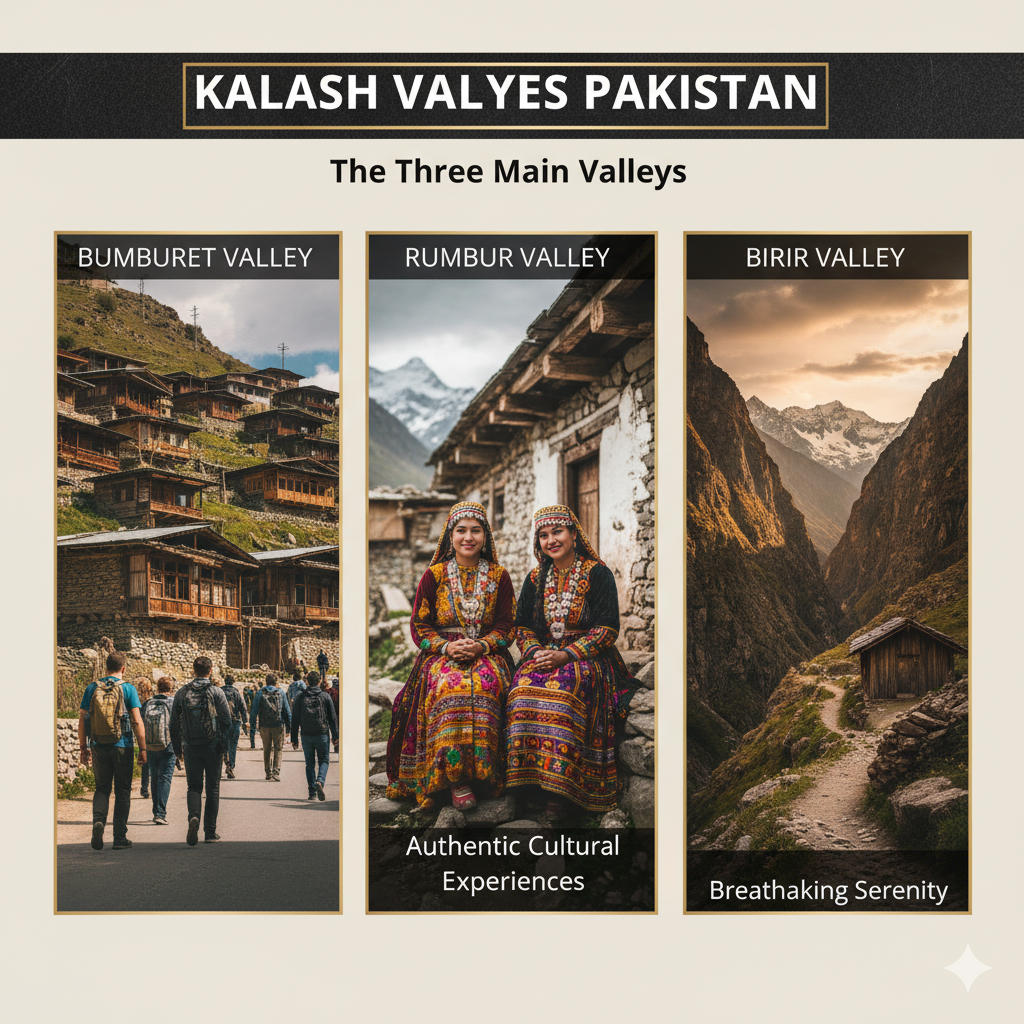
The Three Main Valleys
- Bumburet Valley – The largest and most accessible; the gateway for most travelers.
- Rumbur Valley – More remote and traditional, ideal for authentic cultural experiences.
- Birir Valley – Least visited, rugged terrain, breathtaking serenity.
These valleys are only a few hours from Chitral town, but the journey feels like stepping centuries back in time. Towering cliffs, turquoise rivers, walnut trees, and wooden homes built into steep hillsides make this landscape look like a living museum.
Who Are the Kalash People?
The Kalash are a small, ancient ethnic group — fewer than 4,000 remain — who have preserved a unique culture unlike any other in South Asia.
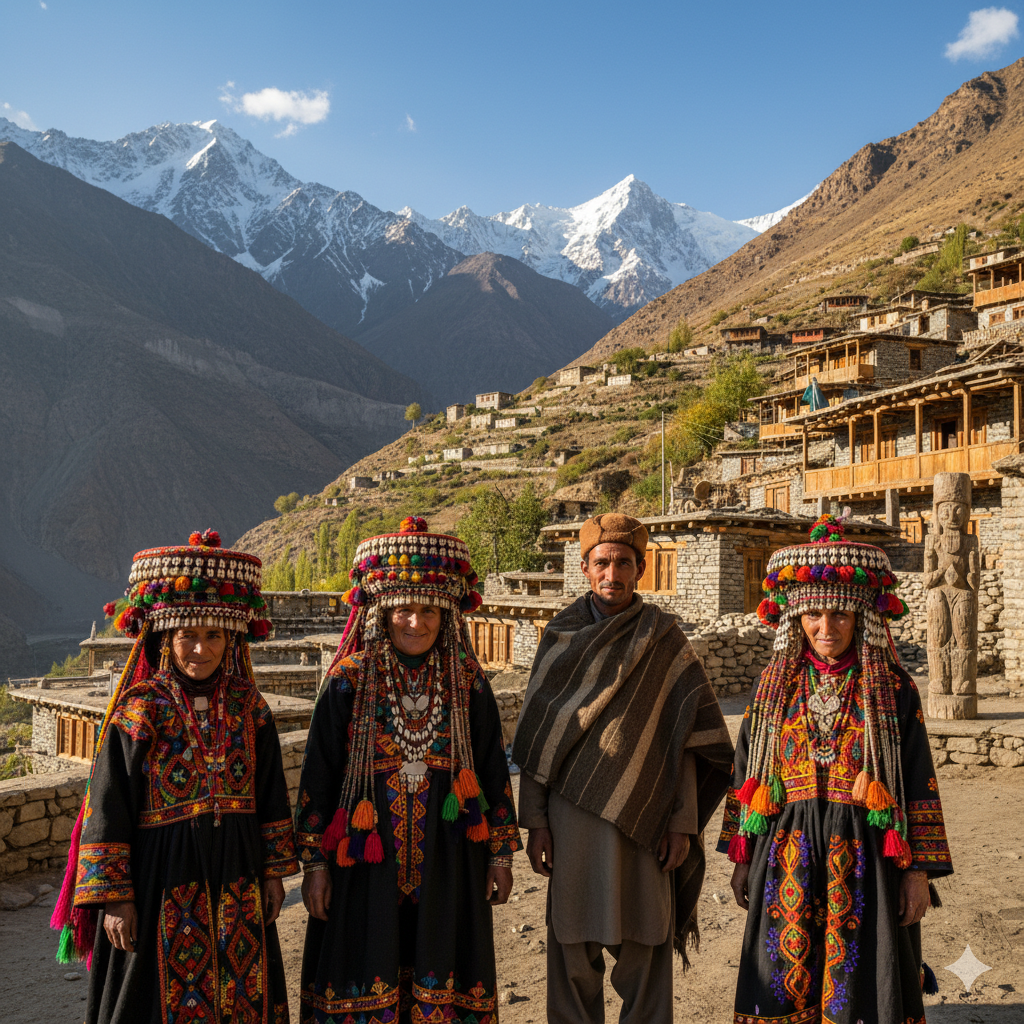
Origins and Mystique
Legends claim the Kalash are descendants of Alexander the Great’s soldiers, who settled here more than 2,000 years ago.
While historians debate that story, genetic studies show Indo-Aryan roots linked to ancient tribes of Central and South Asia.
Language and Religion
- Language: Kalasha, an Indo-Aryan tongue related to Khowar.
- Religion: A polytheistic belief system rooted in nature worship, ancestor reverence, and seasonal rituals.
Their pantheon includes deities like Dezau (creator god) and Balumain (protector and festival spirit).
Cultural Identity
Kalash women are instantly recognizable by their black robes embroidered with bright orange, blue, and green thread, topped with beaded headdresses called Susutr. Men typically wear wool caps and maintain traditional architecture.
A Living Culture: Traditions, Values, and Everyday Life
The Kalash way of life is built around community, respect for nature, and celebration.
They believe in keeping harmony between humans, gods, and the land.
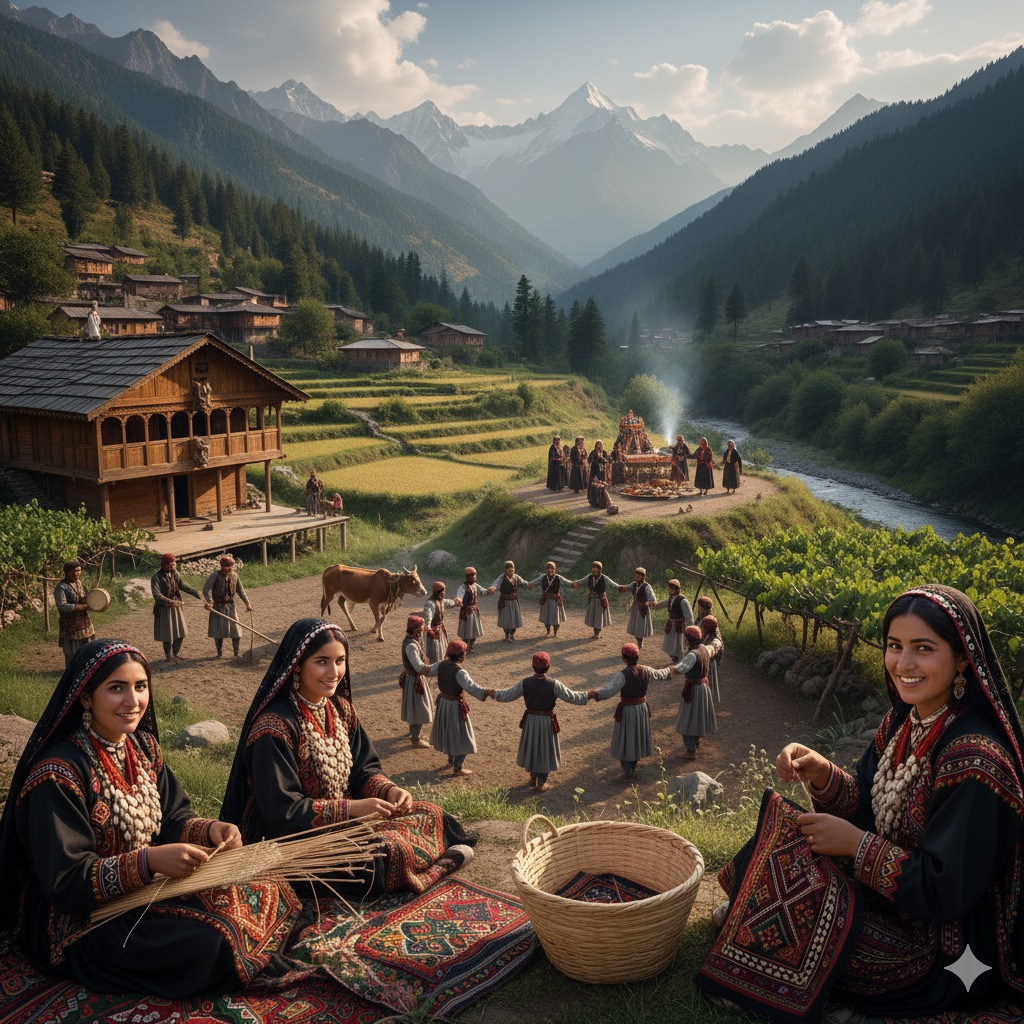
Daily Life
Villagers rely on agriculture, animal herding, and handicrafts. They grow wheat, maize, grapes, and walnuts.
Women weave baskets and embroidered garments, while men handle farming and woodwork.
Customs and Symbolism
- Purity vs. Impurity: A complex spiritual code guides who can enter sacred spaces or touch certain objects.
- Funerals: The Kalash celebrate the life of the deceased with music, dance, and feasting, believing the soul rejoices in freedom.
- Festivals: Integral to community life — a cycle of renewal through song and dance.
Festivals of the Kalash: The Spirit of Celebration
The Kalash festivals are the heartbeat of their culture — expressions of joy, gratitude, and identity.
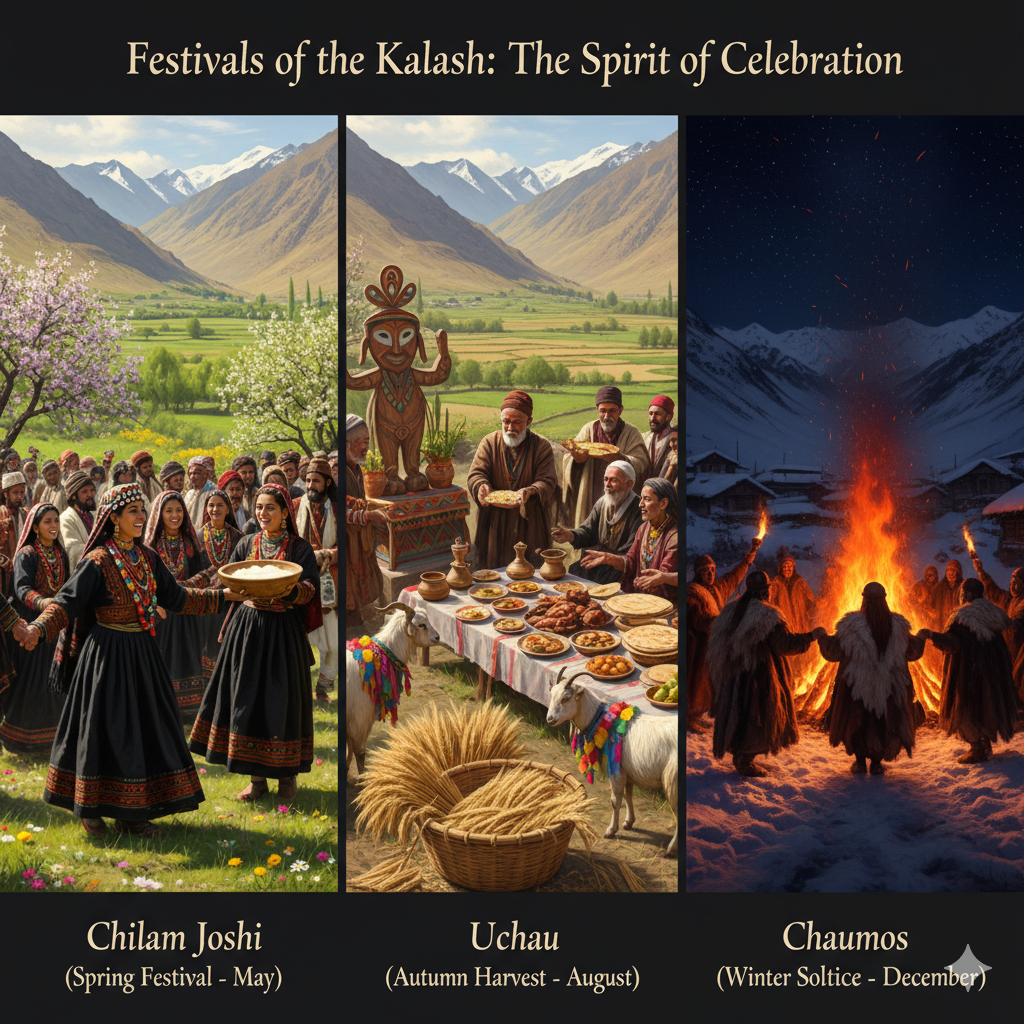
Chilam Joshi (Spring Festival – May)
The most famous festival, celebrating fertility, new life, and love.
Villagers wear their best clothes, dance in circles, and share buttered milk and wine.
This is when many young Kalash meet future partners — a time of color, courtship, and community pride.
Uchau (Autumn Harvest – August)
A thanksgiving for the wheat and barley harvest.
Offerings are made to the gods, animals are blessed, and feasts fill the valleys.
Chaumos (Winter Solstice – December)
The most sacred festival marking the Kalash New Year.
For 14 days, people sing, perform rituals, and light bonfires to purify the valley.
Tourists rarely witness this as roads close due to snow, making it one of the most mysterious celebrations.
How to Visit the Kalash Valleys
Best Time to Visit
- April to October: Ideal weather and festivals.
- Avoid harsh winters (December–March) when heavy snow blocks access.
How to Get There
- Fly to Chitral Airport from Islamabad (50–60 minutes).
- From Chitral, hire a 4×4 jeep to Ayun village, then continue to Bumburet, Rumbur, or Birir.
- Roads are rough but scenic, winding along cliffs and rivers.
Accommodation
- Bumburet offers eco-lodges and guesthouses.
- Rumbur has homestays for immersive experiences.
- Birir remains rustic, ideal for travelers seeking solitude.
Tip: Always carry a National ID or Passport. Foreigners may need to register at police checkpoints.
What to See and Do
Scenic Exploration
- Trek between the valleys to see stunning terraced fields, wooden bridges, and mountain streams.
- Visit Bumburet Museum, which showcases ancient artifacts and costumes.
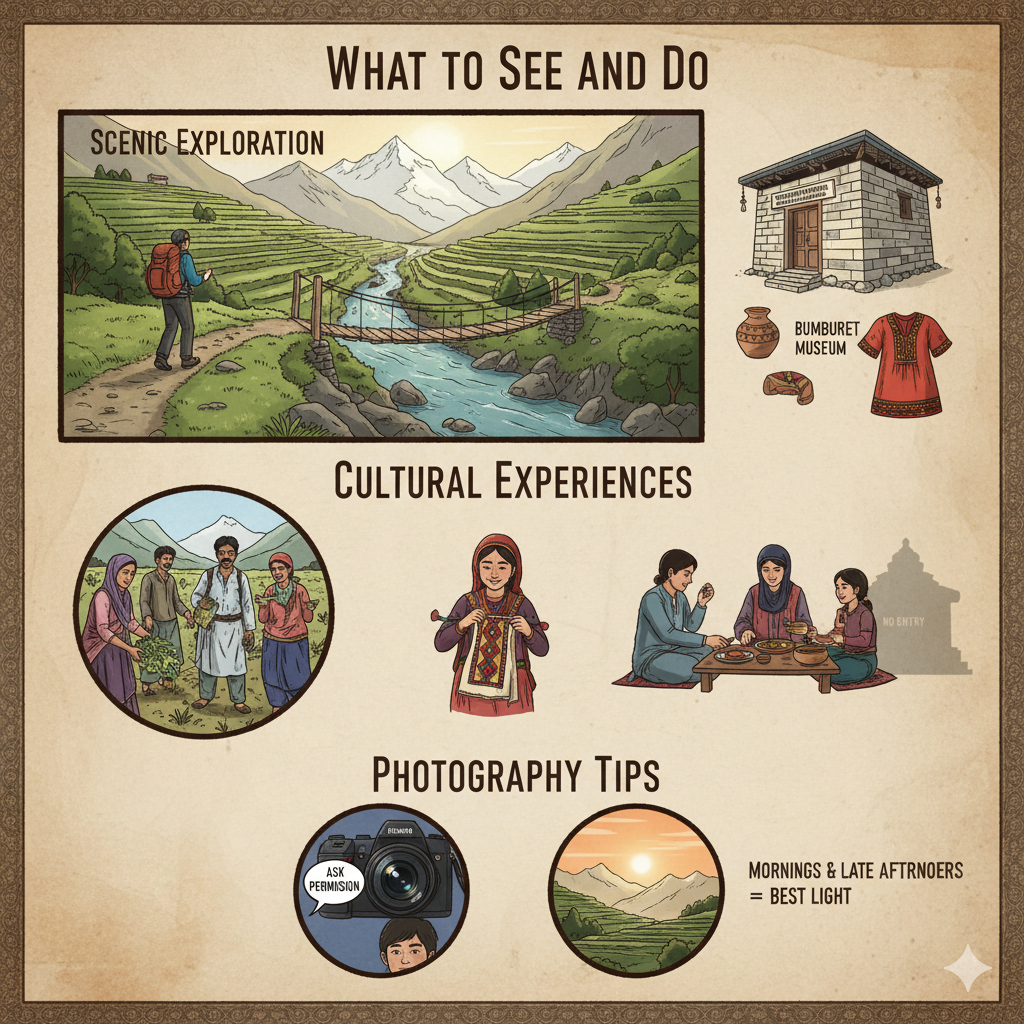
Cultural Experiences
- Join locals in daily life: help with harvests, learn embroidery, share traditional meals.
- Respect cultural boundaries — some temples and rituals are sacred.
Photography Tips
- Always ask permission before photographing people, especially women.
- Mornings and late afternoons provide the best light.
The Other Side: Challenges Facing the Kalash
Despite their beauty and fame, the Kalash face numerous modern challenges.
Cultural Erosion
Globalization and external influence threaten their traditions.
Many young people move to cities, leaving ancestral practices behind.
Economic Pressure
Tourism brings income but also inequality.
Poor road infrastructure limits opportunities, and seasonal visitors often leave minimal lasting benefit.
Environmental Threats
Deforestation, climate change, and waste from unregulated tourism impact their fragile ecosystem.
Religious & Social Pressure
As Pakistan’s only non-Muslim indigenous group, the Kalash have faced conversion pressure and social marginalization.
Government and NGO efforts are improving awareness, but more work is needed.
Why Are the Kalash Valleys Poorly Covered Outside Pakistan?
Even though travelers adore them, international recognition is minimal.
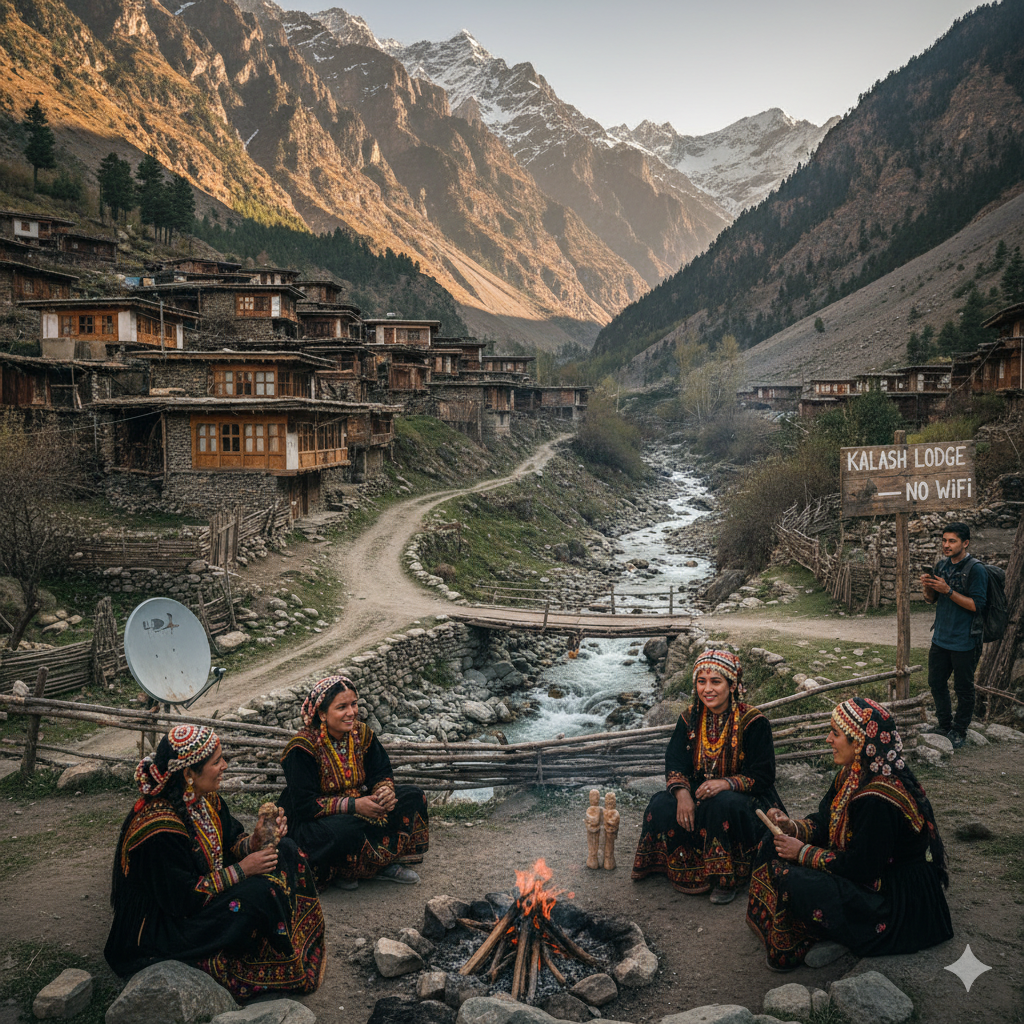
Here’s why:
- Remote Geography – Limited access keeps journalists and influencers away.
- Lack of Infrastructure – Few hotels, no consistent Wi-Fi, limited media outreach.
- Over-focus on Northern Areas (Hunza, Skardu) – Tour operators market these more.
- Cultural Sensitivity – Journalists often hesitate to cover indigenous spirituality respectfully.
Yet ironically, this lack of exposure is what preserves the Kalash Valleys’ authenticity.
Check Also:
Responsible & Ethical Tourism
If you visit, remember — you are a guest in a living heritage site.
✅ Support local businesses (buy crafts directly).
✅ Avoid plastic waste — bring reusable bottles.
✅ Respect festivals and rituals — don’t treat them like entertainment.
✅ Ask before entering sacred spaces.
✅ Hire local guides who know Kalash language and customs.
Sustainable tourism is key to preserving the Kalash way of life while supporting their economy.
Voices of the Kalash
“We are proud of our traditions. We dance to celebrate life, not just to entertain.”
— Local elder from Rumbur Valley
“When outsiders come with respect, we welcome them as family.”
— Kalash woman, Bumburet
Their stories are rarely told, but through community-driven tourism and social media, younger Kalash are beginning to share their voice with the world.
Source:
The Future of Kalash Valleys
Preservation requires balance — protecting identity while embracing progress.
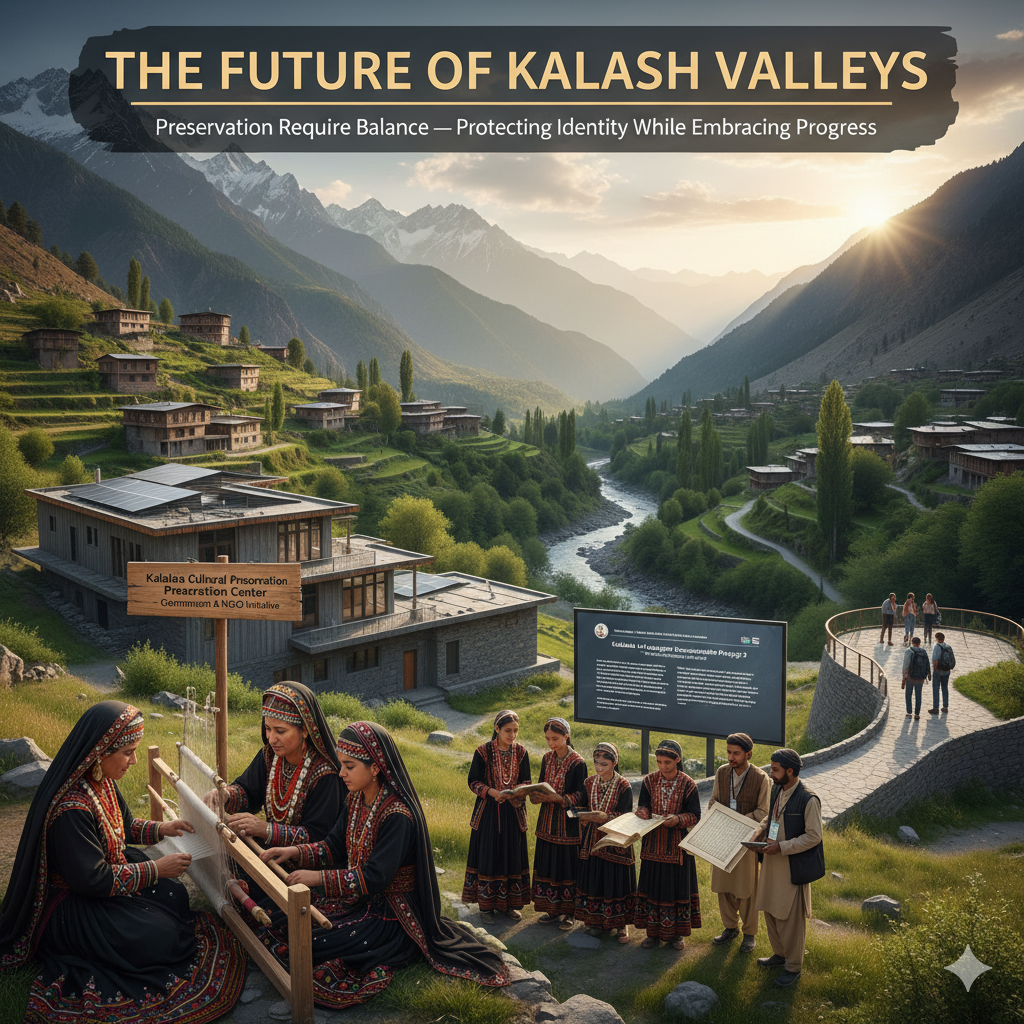
Projects are underway:
- Cultural Preservation Centers by government and NGOs
- Kalasha Language Documentation Programs
- Eco-tourism initiatives that employ locals
If properly supported, the Kalash Valleys could become a UNESCO World Heritage Site — a recognition they truly deserve.
FAQs
Q1: Is it safe to visit the Kalash Valleys?
Yes, it’s generally safe. Roads can be rough but locals are friendly. Check weather and road updates before travel.
Q2: Do I need a special permit?
No, but foreigners register at local checkpoints.
Q3: How many days are enough?
3–5 days is ideal for exploring all three valleys.
Q4: Can solo travelers visit?
Yes. Many solo travelers (including women) visit with no issues when guided locally.
Q5: What should I pack?
Warm layers, sturdy shoes, cash (no ATMs), snacks, camera, and respect for culture.
Traveler Advise: A World Apart, Yet a Mirror to Humanity
The Kalash Valleys are more than a travel destination — they’re a living archive of human diversity, resilience, and joy.
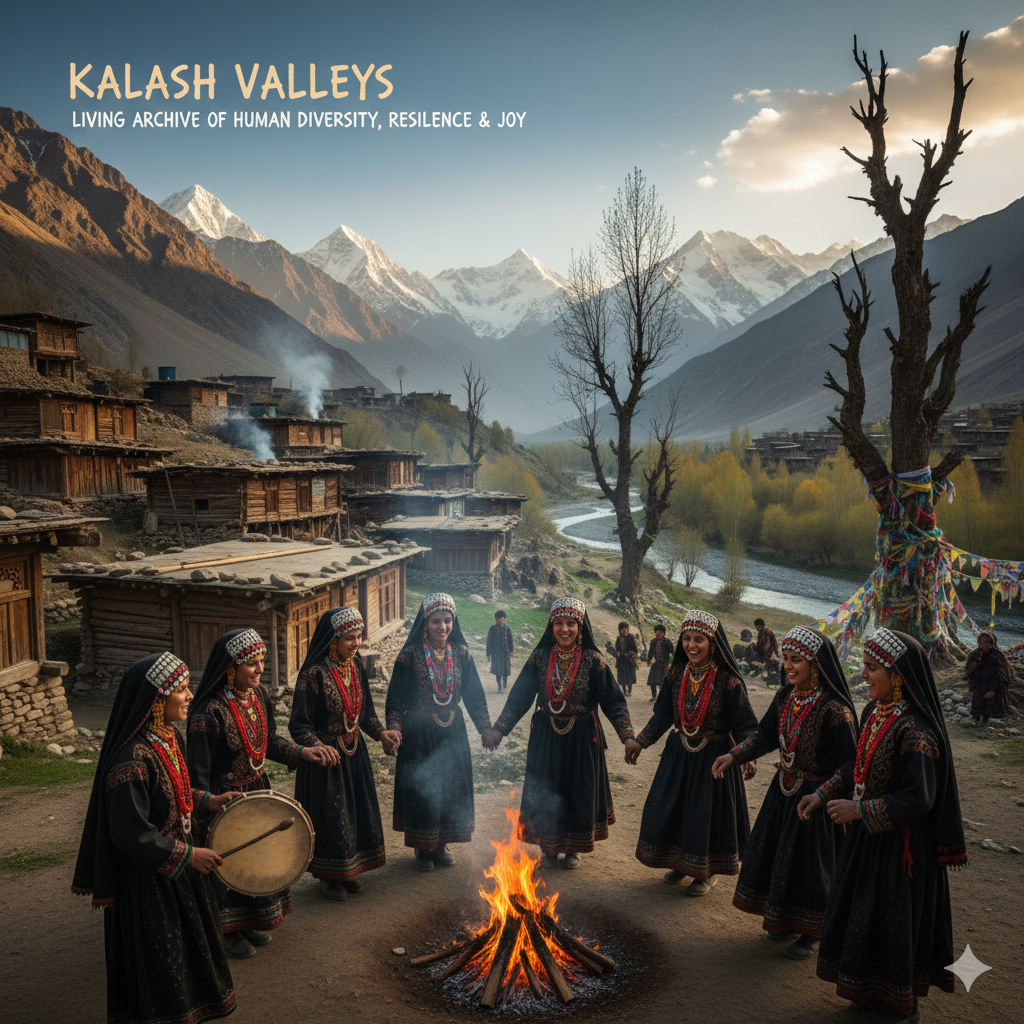
From the laughter echoing through wooden villages to the rhythm of drums during festivals, every corner tells a story of endurance and beauty.
While modernity presses in, the Kalash people continue to dance, sing, and celebrate life — inviting the world to witness a culture that has survived for millennia.
If you seek authenticity, spirituality, and natural splendor, the Kalash Valleys are your next destination — just remember, visit not as a tourist, but as a respectful learner of one of Earth’s last ancient tribes.

